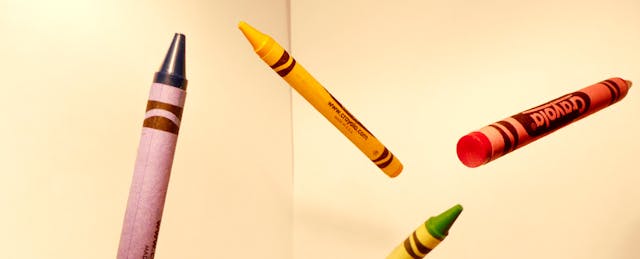Technology alone can't educate students. It’s not some mystical, magical ingredient one sprinkles over core curricula like salt on a meal. The magic is inside the child. If designed correctly, technology only extends the creative powers of the individual. Technology needn’t be “high-tech” to be effective, either. Chalk on a graphite board is one of the earliest forms of technology in the classroom; a printed book is a kind of machine; a magnifying glass is technology for investigation of the natural world; string is a tool for building things.
A Pedagogy of Answers
Too many schools apply a paint-by-numbers approach to tech: “Let’s cover this fixed information, in this exact way, in this set amount of time, and judge ourselves as educators and students based on standardized test results.” Even our national conversation about the education crisis in the STEM subjects (science, technology, engineering, and math) focuses almost solely on America’s competitiveness on the world stage and students’ qualifications for the job market of tomorrow. That stagnant conversation has leeched much of the joy, magic, and love of learning from the study of those subjects and replaced it with an R.O.I. model of education.
Take Los Angeles’s plan to put iPads into the hands of each of its 650,000 students, which was a complete disaster; the nation’s second largest school district demanded a refund from Apple and Pearson, the company that designed the $1.3 billion curriculum. The mistake made in L.A. is that the city’s iPad experiment focused on answers: information, knowledge, skills, and tests. Children don’t learn that way.
To date, tech in the classroom has been used mostly to prettify an outdated model of passive learning. Examples of this kind of misapplication might be, “Let’s take the latest laptop computer and put a flashcard app on it!” Or, “Let’s make a math game where kids shoot at the right answer like they’re space aliens!” That kind of tech in the classroom hasn’t worked because it simply propagates into new mediums a broken model of how people learn.
A Pedagogy of Questions
Our national teaching model has for too long been a pedagogy of answers. In its place I’d like to suggest a new pedagogy of questions—one that prizes interest-driven, project-based, exploratory studies. Personal gardens of learning with no single pathway through them. More open play and less rote memorization. More learning by discovery than following set instructions. (It’s for these reasons I’d always choose a bucket of random Legos over a manual to build a colored-brick Batmobile or Death Star. . . ) And technology has an important part to play in making that vision a reality. Let’s imagine for a moment a classroom where children are encouraged to:
1. Go about and wander until a salient question arises.
2. Paint and model and code solutions or experiments or musings to dig deeper into the questions raised.
3. Build things and try them out, politically, socially, or physically.
4. Share and modify results.
That school environment can exist today with the tools at hand. As an inventor and father, my advice to those looking to make digital in-roads into our nation’s schools is this: promote learning that encourages kids to choose their own problems and solutions rather than a single, siloed system. Rewards are inherent if students find novel ways to use the technology with which they’re presented; friendships are stoked, and the technology is now owned and created by them rather than the other way around. Embrace the fact that students might find ways to hack the tools you present them; if you expect it then you have created space for it to happen. Finally, tactile learning is too often overlooked in digital classroom initiatives, so think about what a student’s hands will be doing when using technology.
Just as new media have not replaced our fundamental need to tell stories, invent characters, and instill moral lessons, so technology in the classroom will always be an aid for learning, never an end in itself. Putting the right tools in kids’ hands can help children explore the world they know and reinforce that “magic” is the silent “M” in STEM. Tech isn’t the answer, but it can help us create a new pedagogy of questions.

![Maximizing Tier 1 Instruction: Strategies and Benefits of Effective Scaffolding [Infographic]](https://edsurge.imgix.net/static_assets/blue_green_gradient.jpg?auto=compress%2Cformat&w=360&h=190&fit=crop&blur=200&px=16&mono=E4E6E9)
![Maximizing Tier 1 Instruction: Strategies and Benefits of Effective Scaffolding [Infographic]](https://edsurge.imgix.net/static_assets/blue_green_gradient.jpg?auto=compress%2Cformat&w=190&h=190&fit=crop&blur=200&px=16&mono=E4E6E9)